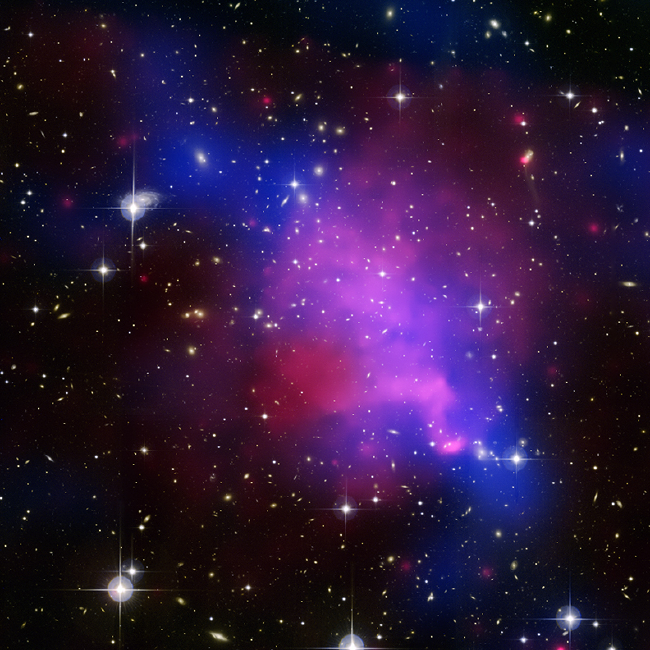
 Credit: NASA/CXC/UVic./A.Mahdavi et al. Optical/Lensing: CFHT/UVic./A.Mahdavi et al.
Credit: NASA/CXC/UVic./A.Mahdavi et al. Optical/Lensing: CFHT/UVic./A.Mahdavi et al.
Light and Dark Matter
What's the matter? That's the most pressing question for physicists. The evidence from astronomical observations that the stuff we see around us (mostly stars and interstellar matter) is only the tip of the gravitating iceberg, while most of the material giving structure to the Universe is dark, and detectable only by the massive superpositions of its faint gravitational tugs. The first comparison of the location of dark matter compared to normal "visible" matter surprisingly showed a significant difference, suggesting that dark matter is only affected by gravity. A new observation (above) also shows a significant difference in the presence of normal and dark matter. The image above is an optical image of the Abell 520 cluster of galaxies. Individual galaxies (and some stars in our own Galaxy) can be seen in light yellow and orange. Superimposed is a Chandra X-ray image (in red) which shows that most of the normal matter is distributed as a thin gas throughout the cluster, and not centered on any individual galaxy. The diffuse glow in blue represents the distribution of gravitating matter as traced by gravitational lensing observations with the Canada-France-Hawaii and Subaru telescopes. Observations like these give astrophysicists a deeper understanding of the properties of dark matter, and may eventually lead to a full understanding of this mysterious stuff.
<
HEA Dictionary ● Archive
● Search HEAPOW
● Other Languages
● HEAPOW on Facebook
● Download all Images
● Education ● HEAD
>
Each week the HEASARC
brings you new, exciting and beautiful images from X-ray and Gamma ray
astronomy. Check back each week and be sure to check out the HEAPOW archive!
Page Author: Dr. Michael F. Corcoran
Last modified Monday, 26-Feb-2024 17:34:06 EST


